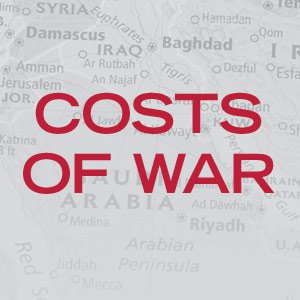
The Gulf Cooperation Council (GCC) member states—Bahrain, Kuwait, Oman, Qatar, Saudi Arabia, and the United Arab Emirates—along with certain Arab League countries, plus Turkey and Israel, have early December 2013 committed themselves to raising nearly $6 billion seed money for new Islamic Front (IF) in Syria. This coalition wants also USA to particapate onto a plan to oust the Syrian government by funding, arming, training and facilitating a front formed out of an alliance of seven “moderate” rebel factions. Beside of toppling the Assad regime the other benefit would be truncating Iran’s growing influence.
$6 billion might look big investment. However the ”marketing slogan” for US involvement is ”better six billon than six trillion”. The claim is well based to the definitive Brown University study (The Costs of War project), which examined costs of the US wars in Iraq, Afghanistan, and Pakistan, the total amount for all three topped six trillion dollars . This never before released figure includes costs of direct and indirect Congressional appropriations, lost equipment, US military and foreign contractors fraud, and the cost of caring for wounded American servicemen and their families (war costs to date 4 trillion + interest rates 2 trillion for 40 years). In this sense few billions US money for IF could be a good bargain.
- In June 2011, the Costs of War project, a scholarly initiative of Brown University’s Watson Institute for International Studies, produced the first comprehensive analysis of a decade of wars in Afghanistan, Iraq, and Pakistan. The Costs of War Project analyzes the implications of these wars in the United States and internationally in terms of human casualties, economic costs, and civil liberties.
The new Islamic Front
Among the Islamist militia joining the new Gulf Cooperation Council (GCC)-backed
coalition are Aleppo’s biggest fighting force, Liwa al-Tawhid (Tawhid
Brigade), the Salafist group Ahrar al-Sham, Suqour al-Sham, al-Haq
Brigades, Ansar al-Sham and the Islamic Army, which is centered around
Damascus. The Kurdish Islamic Front also reportedly joined the alliance.
None of these groups have been designated foreign terrorist
organizations by the US, and therefore, as an Israeli official argued in
a meeting with AIPAC and Congress this week, nothing stands in the way
of US funding and support for them. IF’s declared aim is to topple
Syrian President Bashar al-Assad’s government, whatever the human and
material cost it may require, and replace it with an “Islamic state.”This combined force – IF – is estimated by the CIA to number at around 75,000 fightersthat will fight under one command. What is not included to this new front is other Muslim militia—Daash or al-Nusra or the Islamic State of Iraq and the Levant, for instance—that comprise the IF’s chief rivals.
According to sources in Aleppo and Damascus, the IF’s top leadership positions have been parceled out among five of the seven groups. Four days after the IF was announced, the organization released an official charter. The charter calls for an Islamic state and the implementation of sharia law, though it does not define exactly what this means. The IF is firmly against secularism, human legislation (i.e., it believes that laws come from God, not people), civil government, and a Kurdish breakaway state. The charter states that the group will secure minority rights in post-Assad Syria based on sharia, which could mean the dhimma (“protected peoples”) system, or de facto second-class citizenship for Christians and other minorities.
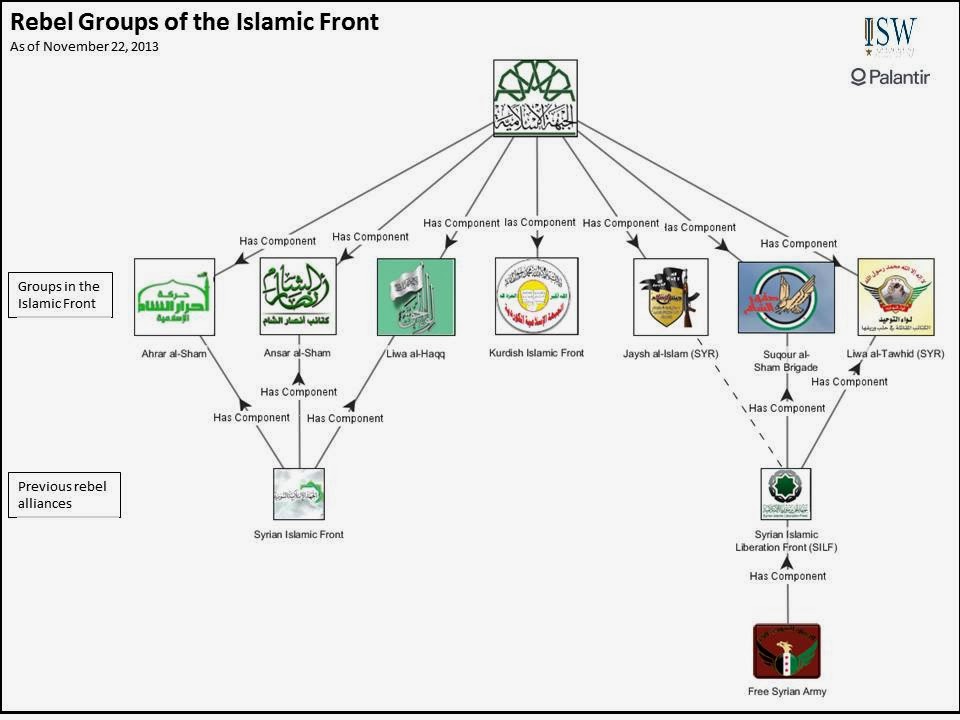
- Figure credit: Institute for the Study of War Syria
A by-product of these activities has been the bolstering of Sunni extremist groups that espouse a militant vision of Islam and are hostile to America and sympathetic to Al Qaeda. While the initial conflict was disingenuously portrayed as the spontaneous militarization of unarmed protesters fighting against a “brutal regime,” in reality Al Nusra was already inside the country and operating on a national scale. The US State Department itself would reveal this in its December 2012 Terrorist Designations of the al-Nusrah Front as an Alias for al-Qa’ida in Iraq, which stated:
Since November 2011, al-Nusrah Front has claimed nearly 600 attacks – ranging from more than 40 suicide attacks to small arms and improvised explosive device operations – in major city centers including Damascus, Aleppo, Hamah, Dara, Homs, Idlib, and Dayr al-Zawr. During these attacks numerous innocent Syrians have been killed.The terror implemented by those groups who are not included to the new Islamic Front continues against civilians. Recently Al-Qaeda linked Islamists have kidnapped at least 120 Kurdish civilians from a village in Aleppo province near the border with Turkey, Observatory for Human Rights reported. The incident is the latest in the armed conflict between Syrian Kurds and Islamic factions. 51 Kurdish civilians from the towns of Manbij and Jarablus, northeast of Aleppo, have been kidnapped by Islamist fighters since the beginning of December.
The armed opposition has been opportunistic and bloody from the start, targeting security forces, on and off duty, and pro-government civilians since March 2011. While there were indeed Syrian army defectors who joined the “revolution” early on in the conflict in response to government clampdowns and/or their own genuine political sentiments, much of the armed rebellion has been funded, assisted and organized from outside Syria’s borders. It is known, that non-Syrians were entering the country right from the beginning. These people were provided with wages, weapons, intelligence and training, with the expectation that a hard thrust against al-Assad’s government would unseat him in short shrift, much like what had already happened in other Arab states.
This opposition has been funded and assembled by foreign foes of Syria for geopolitical gain. Their goal was to unseat a “dictator” so that they could then come in and establish their own foreign-backed “dictatorship” at the heart of the Resistance Axis. The reason this opposition has never been able to articulate a cohesive, inclusive, political platform for the Syrian people is because they are all backed by different, sometimes competing, interests, and because their goal is not a politically reformed Syria, but instead the establishment of their own power and economic bases.
The new UN report
"The
United Nations Mission concludes that chemical weapons have been used
in the ongoing conflict between the parties in the Syrian Arab
Republic," (Åke Sellstrom, chief UN investigator )
A
new UN report states that in addition to the widely publicised chemical
weapons attack on August 21 near Damascus, such weapons were probably
used in four other locations in Syria between March and late August. The
findings show that in at least 3 attacks, civilians as well as soldiers
were targeted, which is a strong indication that the rebels were in
possession of chemical weapons and that these chemical weapons were used
against both Syrian government forces as well as civilians. For example assessment reletaed to CW attack against soldiers (government forces) and civilians in Khan Al Asal on 19 March 2013 (p.19 in UN report) was in response to a formal request by the Syrian government. In a letter (dated 19 March 2013),
the Representative of Syria to the UN informed the Secretary-General
and the President of the Security Council of its allegation that, at
0730 hours on 19 March, armed terrorist groups had fired a rocket from
the Kfar De’il area towards Khan Al Asal in the Aleppo governorate.
“What is written in the current report does not change but even confirms our conviction that fighters, not the Syrian government, are behind the use of chemical weapons in Syria,” Russian Permanent Envoy to the UN Vitaly Churkin said on Rossiya-24 news television channel.
But the revised UN analysis, attached to a new UN report
on several other alleged chemical weapons incidents in Syria, punched a
new hole in the notion that the Republican Guard fired a Sarin-laden
missile into Moadamiyah. The UN inspectors found no chemical weapons
agents on the remnants of the crudely made missile that landed in
Moadamiyah (or for that matter no Sarin anywhere else in the area). In the earlier UN report
about the Aug. 21 incident, one of two UN labs had detected on a metal
fragment what the lab thought was a chemical residue that can be left
behind by degraded Sarin. But the new analysis withdraws that finding,
an indication of how fragile the chemistry can be in getting false
positives on derivative chemical residue. The two UN laboratories are
now in agreement that there was neither Sarin nor possible derivatives
of Sarin on the metal fragments from the Moadamiyah missile.
The
new UN report suggests that Syrian rebels have developed a capability
to produce at least crude chemical weapons and delivery systems, further
adding to the possibility that the Aug. 21 attack east of Damascus
could have resulted from a botched rebel launch of a makeshift missile
aimed at government targets or as an accident. The investigation found
likely use of chemical weapons in Khan al-Assal, near the northern city
of Aleppo, in March; in Saraqeb, near the northern city of Idlib, in
April; and in Jobar and Ashrafiat Sahnaya, near Damascus, in August.
Rebels have seized all kinds of weapons from military depots across the
country, according to the United Nations. Western powers say the rebels
do not have access to chemical arms.
An
annex to the UN report reproduced YouTube photographs of some recovered
munitions, including a rocket that ‘indicatively matches’ the specifics
of a 330mm calibre artillery rocket. The New York Times
wrote that the existence of the rockets essentially proved that the
Syrian government was responsible for the attack ‘because the weapons in
question had not been previously documented or reported to be in
possession of the insurgency’. Theodore Postol, a professor of
technology and national security at MIT, reviewed the UN photos with a
group of his colleagues and concluded that the large calibre rocket was
an improvised munition that was very likely manufactured locally. The
rocket in the photos, he added, fails to match the specifications of a
similar but smaller rocket known to be in the Syrian arsenal. The New York Times,
again relying on data in the UN report, also analysed the flight path
of two of the spent rockets that were believed to have carried sarin,
and concluded that the angle of descent ‘pointed directly’ to their
being fired from a Syrian army base more than nine kilometres from the
landing zone. However the range of the improvised rockets was ‘unlikely’ to be more than two kilometres.
Read the full (final) report here: United Nations Mission to Investigate Allegations of the Use of Chemical Weapons in the Syrian Arab Republic.
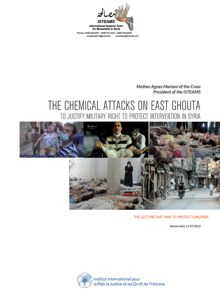 Besides UN report there still are questions and observations unanswered rised in ISTEAMS -report (More in Syria Chemical Weapons Attack – Whodunnit II ).
Besides UN report there still are questions and observations unanswered rised in ISTEAMS -report (More in Syria Chemical Weapons Attack – Whodunnit II ).Mother Agnes Mariam in her interview: One of the reasons that I would like to see the graves is because 1,466 deaths is a real “social tsunami” in the Syrian society where everybody knows everybody and everybody is related. In the case of East Ghouta, we did not even have one case show up. We did not know of one single person who is dead. You know, to have relatives claiming this – the brother, the friend – nobody did. We did not have the “echo” of the death of 1,466 people. We are asking for a neutral inquiry with the presence of witnesses from both sides, where they will open the pits, see the victims, they will take samples randomly – where they took it, how they took it, etc. Samples should be sent to 5 labs under the same conditions and precautions. Until then there is a question mark on everything.
Whodunnit III
[Note: The sub-headline refers my earlier articles Syria Chemical Weapons Attack – Whodunnit IIand Whodunnit in Syria ]
In
a December article for the London Review of Books, investigative
reporter Seymour Hersh confirmed that President Barack Obama misled the
American people over the Aug. 21 (2013) Syrian
chemical attack by cherry-picking evidence about the Syrian
government’s presumed guilt and excluding suspicions about the rebels’
capability to produce their own Sarin gas. Hersh also reported that he
discovered a deep schism within the U.S. intelligence community over how
the case was sold to pin the blame on President Assad. Hersh wrote
that he encountered “intense concern, and on occasion anger” when he
interviewed American intelligence and military experts “over what was
repeatedly seen as the deliberate manipulation of intelligence.”
According to Hersh, “One high-level intelligence officer, in an email to
a colleague, called the administration’s assurances of Assad’s
responsibility a ‘ruse’. The attack ‘was not the result of the current
regime’, he wrote.”President Obama failed to acknowledge something known to the US intelligence community: that the Syrian army is not the only party in the country’s civil war with access to sarin. In the months before the attack, the American intelligence agencies produced a series of highly classified reports, culminating in a formal Operations Order – a planning document that precedes a ground invasion – citing evidence that the al-Nusra Front, a jihadi group affiliated with al-Qaida, had mastered the mechanics of creating sarin and was capable of manufacturing it in quantity. When the attack occurred al-Nusra should have been a suspect, but the administration cherry-picked intelligence to justify a strike against Assad. A quote from mentioned Hersh article:
[President Obama] cited a list of what appeared to be hard-won evidence of Assad’s culpability: ‘In the days leading up to August 21st, we know that Assad’s chemical weapons personnel prepared for an attack near an area where they mix sarin gas. They distributed gas masks to their troops. Then they fired rockets from a regime-controlled area into 11 neighbourhoods that the regime has been trying to wipe clear of opposition forces.’ But in recent interviews with intelligence and military officers and consultants past and present, I found intense concern, and on occasion anger, over what was repeatedly seen as the deliberate manipulation of intelligence... A former senior intelligence official told me that the Obama administration had altered the available information – in terms of its timing and sequence – to enable the president and his advisers to make intelligence retrieved days after the attack look as if it had been picked up and analysed in real time, as the attack was happening.Hersh describes also that in Syria there is also a secret sensor system inside Syria, designed to provide early warning of any change in status of the regime’s chemical weapons arsenal. The sensors are monitored by the National Reconnaissance Office (NRO), the agency that controls all US intelligence satellites in orbit. NRO sensors have been implanted near all known chemical warfare sites in Syria. They are designed to provide constant monitoring of the movement of chemical warheads stored by the military. But far more important, in terms of early warning, is the sensors’ ability to alert US and Israeli intelligence when warheads are being loaded with sarin. A chemical warhead, once loaded with sarin, has a shelf life of a few days or less – the nerve agent begins eroding the rocket almost immediately. The sensors detected no movement in the months and days before 21 August. It is of course possible that sarin had been supplied to the Syrian army by other means, but the lack of warning meant that Washington was unable to monitor the events in Eastern Ghouta as they unfolded. The sensors had worked in the past, e.g. last December (2012) the sensor system picked up signs of what seemed to be sarin production at a chemical weapons depot. It was not immediately clear whether the Syrian army was simulating sarin production as part of an exercise or actually preparing an attack. At the time, Obama publicly warned Syria that using sarin was ‘totally unacceptable’; a similar message was also passed by diplomatic means. This time there was not the same warning.
 On 30 August the White House invited a select group of Washington journalists, and handed them a document carefully labelled as a ‘government assessment’, which laid out what was essentially a political argument to bolster the administration’s case against the Assad government. The document stated, that US intelligence knew that Syria had begun ‘preparing chemical munitions’ three days before the attack. Later
that day, John Kerry provided more details. He said that Syria’s
‘chemical weapons personnel were on the ground, in the area, making
preparations’ by 18 August. ‘We know that the Syrian regime elements
were told to prepare for the attack by putting on gas masks and taking
precautions associated with chemical weapons.’ The government assessment
and Kerry’s comments made it seem as if the administration had been
tracking the sarin attack as it happened. An unforseen reaction came in
the form of complaints from the Free Syrian Army’s leadership and others
about the lack of warning. ‘It’s unbelievable they did nothing to warn
people or try to stop the regime before the crime,’...‘Intelligence
report says US officials knew about nerve-gas attack in Syria three days
before it killed over 1400 people – including more than 400 children.’ (Razan Zaitouneh/FSA)
On 30 August the White House invited a select group of Washington journalists, and handed them a document carefully labelled as a ‘government assessment’, which laid out what was essentially a political argument to bolster the administration’s case against the Assad government. The document stated, that US intelligence knew that Syria had begun ‘preparing chemical munitions’ three days before the attack. Later
that day, John Kerry provided more details. He said that Syria’s
‘chemical weapons personnel were on the ground, in the area, making
preparations’ by 18 August. ‘We know that the Syrian regime elements
were told to prepare for the attack by putting on gas masks and taking
precautions associated with chemical weapons.’ The government assessment
and Kerry’s comments made it seem as if the administration had been
tracking the sarin attack as it happened. An unforseen reaction came in
the form of complaints from the Free Syrian Army’s leadership and others
about the lack of warning. ‘It’s unbelievable they did nothing to warn
people or try to stop the regime before the crime,’...‘Intelligence
report says US officials knew about nerve-gas attack in Syria three days
before it killed over 1400 people – including more than 400 children.’ (Razan Zaitouneh/FSA)Already by late May (2013) the CIA had briefed the Obama administration on al-Nusra and its work with sarin, and had sent alarming reports that another Sunni fundamentalist group active in Syria, al-Qaida in Iraq (AQI), also understood the science of producing sarin. At the time, al-Nusra was operating in areas close to Damascus, including Eastern Ghouta. An intelligence document issued in mid-summer dealt extensively with Ziyaad Tariq Ahmed, a chemical weapons expert formerly of the Iraqi military, who was said to have moved into Syria and to be operating in Eastern Ghouta.
Independently of these assessments, the Joint Chiefs of Staff, assuming that US troops might be ordered into Syria to seize the government’s stockpile of chemical agents, called for an all-source analysis of the potential threat... All Op Orders contain an intelligence threat component and technical analysts from the Central Intelligence Agency, the Defense Intelligence Agency, weapons people, and I & W [indications and warnings] people working on the problem … They concluded that the rebel forces were capable of attacking an American force with sarin because they were able to produce the lethal gas. The examination relied on signals and human intelligence, as well as the expressed intention and technical capability of the rebels.
(Source: Whose Sarin?by Seymour M. Hersh, London Review of Books Seymour
M. Hersh is writing an alternative history of the war on terror. He has
been a regular contributor to The New Yorker since 1993. His journalism
and publishing awards include a Pulitzer Prize, five George Polk
Awards, two National Magazine Awards, and more than a dozen other prizes
for investigative reporting.)
Bottom line
It
remains to seen if GCC will succeed in enticing US into their
fundrising and if the new Islamic Front will be created as significant
opposition force in Syria. I doubt as local warlords are uniting to
share in Saudi largesse for which their enthusiasm is probably greater
than their willingness to fight. The Saudis are probably making a
mistake. The artificial unity of rebel groups with their hands out for
Saudi money is not going to last. They will be discredited in the eyes
of more fanatical jihadis as well as Syrians in general as pawns of
Saudi and other intelligence services.
It
might be possible that US did not implemented planned military
intervention against Syria as its political leadership knew first that
Syrian rebels had chemical weapons, second it knew that Al Assad regime
maybe not used CW in Damascus August 2013 and third that Syrian
opposition might on the end not be better alternative than Al Assad. The UN resolution, which was adopted on 27 September by the Security Council, dealt indirectly with the notion that rebel forces such as al-Nusra would also be obliged to disarm: ‘no party in Syria should use, develop, produce, acquire, stockpile, retain or transfer [chemical] weapons.’ The resolution also calls for the immediate notification of the Security Council in the event that any ‘non-state actors’ acquire chemical weapons.
After Syrian CW agreement came Iran nuke deal and both these against the will of the Saudis. It seems that US has been rapidly altering its regional approach shifting weight from Saudi Arabia towards Iran. Maybe US has came conclusion that it needs more Iran to stop the growth of terror groups, networks and activities of Salafi extremists, both in and out of the Middle East – with Iran stabilization of chaotic region might be possible.
Some of my previous articles about Syria:
Syria Chemical Weapons Attack – Whodunnit II
Demolition Of CW Stockpiles Is Only Contributory Factor In The Syria War
The Four-stage Plan For Syria – Can It Work
Whodunnit in Syria
Syrian Rebels Admit Chemical Attack InDamascus???
Syria: From War To Dissolution With Help Of Media


 project
aims to replenish the rapidly shrinking Dead Sea by transferring in
water from the Red Sea along a 110-mile (180 km long) pipeline. The
pipeline will channel 100 million cubic meters of water per annum
northward from the Red Sea and will cost an estimated $300-400 million. A
BOT tender for the project will be published in 2014. The pipeline will
take an estimated three years to complete. The inflow of water from the
Red Sea will slow the drying up of the Dead Sea and its concomitant
negative effects.
project
aims to replenish the rapidly shrinking Dead Sea by transferring in
water from the Red Sea along a 110-mile (180 km long) pipeline. The
pipeline will channel 100 million cubic meters of water per annum
northward from the Red Sea and will cost an estimated $300-400 million. A
BOT tender for the project will be published in 2014. The pipeline will
take an estimated three years to complete. The inflow of water from the
Red Sea will slow the drying up of the Dead Sea and its concomitant
negative effects.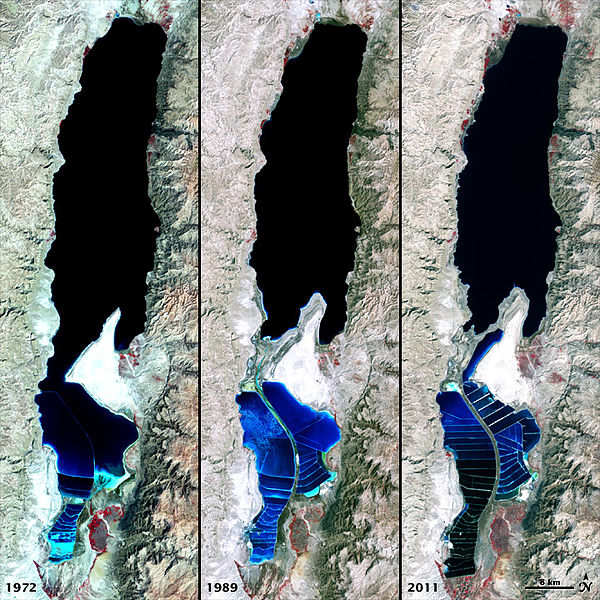



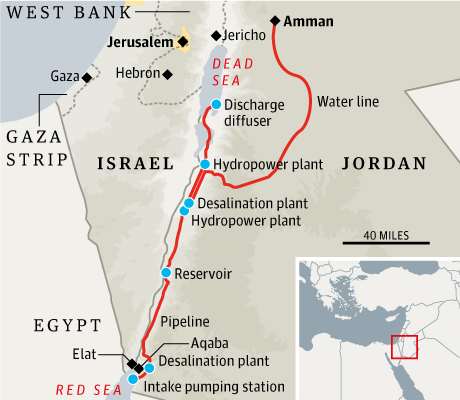
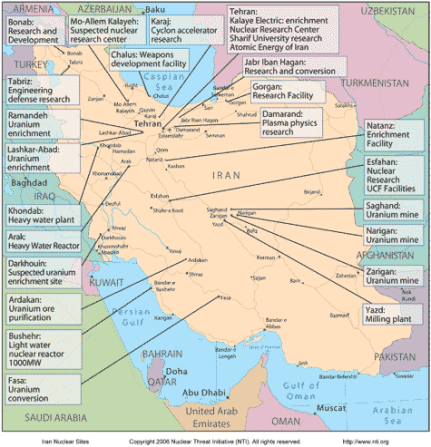

 Israel’s Prime Minister Benjamin Netanyahu told a forum of Jewish community leaders in Moscow
Israel’s Prime Minister Benjamin Netanyahu told a forum of Jewish community leaders in Moscow  On
the other side Gulf States fear not only Iran’s nuclear programme, but
Iran being allowed to continue with its hegemonic ambitions, even being
emboldened by the deal, and that they will be left alone to deal with
it. Already regional states are reaching out to other international
actors aside from the United States: Egypt talking with Russia about a
major arms deal; Turkey considering China for a major air defence
system; Saudi Arabia developing ties with France and Pakistan about
their own nuclear weapon, Israel with France and Russia about
cooperation in energy sector. This is a strong expression of deep
disappointment with the US and its regional approach.
On
the other side Gulf States fear not only Iran’s nuclear programme, but
Iran being allowed to continue with its hegemonic ambitions, even being
emboldened by the deal, and that they will be left alone to deal with
it. Already regional states are reaching out to other international
actors aside from the United States: Egypt talking with Russia about a
major arms deal; Turkey considering China for a major air defence
system; Saudi Arabia developing ties with France and Pakistan about
their own nuclear weapon, Israel with France and Russia about
cooperation in energy sector. This is a strong expression of deep
disappointment with the US and its regional approach. 